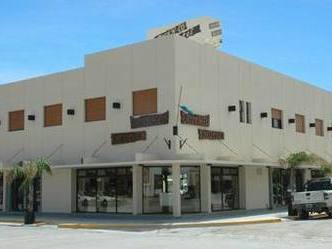The Claromecó Lighthouse
No sooner the word “lighthouse” is mentioned than everyone knows what the conversation is aiming at. There is no doubt that this is one of the icons in Claromecó and one of the most beautiful marks on the Atlantic coast.
According to its technical data, this lighthouse stands within the Department of Tres Arroyos, near the mouth of Claromecó Creek. Its geographic location is: 38° 51' S and 60° 03' W. The construction consists in a masonry tower with horizontal white and black stripes which reaches a height of 54 meters. It was built in response to the same need that motivated the settlement of other lighthouses: to prevent the vessels from coming near the sand banks, typical in this region. Therefore, the lighthouse may be spotted from a distance of 25.9 nautical miles off shore and it is equipped with large lamps that guide sailors especially when the winds and the tempests hamper navigation and orientation. The lighthouse, as well as the city, has been named after the creek that lies in the South of the Province of Buenos Aires. In the Mapuche tongue, claromecó is made up by three words: “cla” (three), “rume” (reed) and “co” (creek, water). The translation would be: “three creeks with reed”.
Lying two kilometers away from the district, its top is reached after climbing, one at a time, the 278 steps that give shape to the structure of this fascinating spiral staircase. At its base, the bones of a whale found on these shores are part of the decoration of this singular site. During the high season, this is one of the most popular rides among children, who always want to go up the lighthouse and have a view of how things look from the heights. The construction works started in 1920 in the land donated by María Larramendi de Bellocq. It was inaugurated on October 20, 1922. It represented quite an odyssey in those days. This is one of the highest lighthouses in South America. It presents 8 meters of width in the base whereas it is approximately 5 meters wide on the top. Its summit displays a matchless view of Claromecó, as well as of some neighboring districts like Reta and Orense. Besides, some local geographical features may be observed. The spiral staircase leads to the platform that surrounds the 1,000-watt lantern that is turned on every night and has avoided dozens of shipwrecks ever since its creation. The light station where the lighthouse stands is kept and managed by the staff of the special service called Servicio Hidrográfico de Balizamiento of the Argentinian Navy. It may be visited daily. Winter and summer open hours are available at the lighthouse access.
Pablo Etchevers
Gentileza Klaromeko.com.ar























